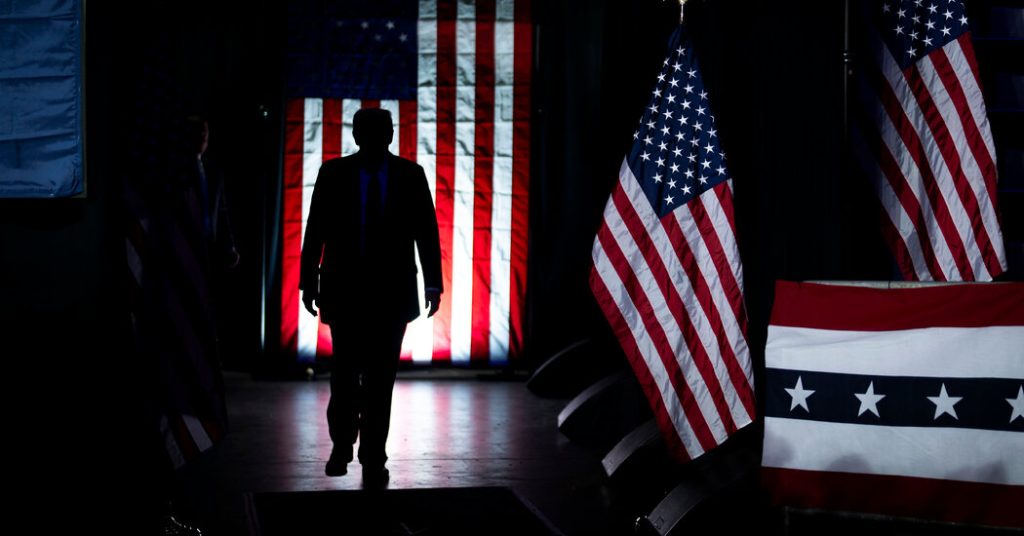Democrats have long been viewed as the big-tent party — a proudly noisy collection of differing views and competing interests, often prompting headlines describing them as “in disarray.”
Now, Donald J. Trump’s commanding victory may be ushering in a big-tent era for Republicans.
Even before he takes the oath of office on Monday, cracks in his freshly expanded coalition have emerged. With their divides, the incoming president and his party are being forced to confront a reality that has often tripped up Democrats: A bigger tent means more room for fighting underneath it.
In recent weeks, some congressional Republicans have dismissed Mr. Trump’s threats of military force against Greenland. Republicans from farm states have squirmed at his plans to impose new tariffs on all goods entering the United States. Opponents of abortion have grumbled about his selection of an abortion rights supporter for his cabinet. Mr. Trump’s embrace of tech billionaires has troubled conservatives who blame their companies for censoring Republican views and corrupting children.
And last week, a fight over the direction of immigration policy prompted Stephen K. Bannon, an architect of Mr. Trump’s political movement, to attack Elon Musk, the world’s richest man and a key Trump adviser, as a “truly evil person.”
“The big battles are all on our side of the football — meaningful, tough,” Mr. Bannon told The New York Times.
This wide range of internal fights over policy and power may be run-of-the-mill in politics, but they are somewhat extraordinary for the Trump-era Republican Party. Since Mr. Trump, a former Democrat unbound by strict ideology, effectively hijacked the party in 2016, the internal clashes have largely been between two clear factions: the traditional Republicans and the Republicans who embraced Mr. Trump.
But eight years later, most of the old guard has been thoroughly conquered or converted. Mr. Trump is entering a Washington where nearly all Republicans consider themselves part of his movement. They just don’t all agree on what, exactly, that means.
Inauguration Day will offer a vivid display of the new crosscurrents in the party. When he takes the oath of office, Mr. Trump will be joined not only by Vice President JD Vance, who spent years railing against big tech, but by at least four technology executives who are part of a crop of industry moguls who warmed to Mr. Trump in recent months, pouring money into his inauguration committee.
For most of his political career, Mr. Trump has been laser-focused on pleasing the voters who elected him. In his first term, Mr. Trump largely worried about holding on to his core group of supporters: white, working-class voters.
But with a bigger, more diverse coalition, that task has grown more complicated and far less clear. Mr. Trump’s victory in November was marked by notable gains in traditionally liberal cities and suburbs and among the Black, Latino, female and younger voters who have long been central to the Democratic Party’s base.
While those voters largely supported Mr. Trump’s goals of lowering prices and curbing illegal immigration, it’s unclear whether they also support the full scope of conservative policies — like ending automatic citizenship at birth and banning abortion nationwide — that some of his hard-right supporters are eager to implement.
“This is the most racially diverse incoming governing coalition for a G.O.P. since at least 1956, and that has the potential to change things,” said Ralph Reed, a Republican strategist and founder of the Faith and Freedom Coalition, who said he had attended every Republican inauguration over the past four decades. “But they’re good challenges to have.”
Newt Gingrich, who was speaker of the House from 1995 to 1999, pointed to two policy debates that will help show whether the party is ready to cater to its new voters.
One is whether Republicans support a pathway to citizenship for Dreamers, a cohort of immigrants who were brought to the country as children. Stripping them of their legal status comes with the political risk of alienating moderate voters, Mr. Gingrich said.
A second test, he said, would be whether Republicans can muscle through a tax bill before July 4 in order to stimulate the economy and help the party keep control of the House through the 2026 midterms.
“There will be mistakes and confusion and tension, but there will also be enormous changes,” he said.
Mr. Trump doesn’t have much wiggle room in Congress, where even slight ideological differences could have an outsize impact on his ability to enact his agenda. The party’s slim, three-vote margin in the House means that any Republican lawmaker has the power to slow down legislation, if not scuttle it entirely. In the Senate, Republicans have 53 votes, leaving little room for dissent on a majority vote.
During his first term, Trump’s grip on his voters — backed up by frequent political threats — stifled most opposition within the party. Whether his political hold remains as strong in his second — and final — term remains to be seen.
Republican strategists say there are plenty of issues where there is broad agreement across the party, including expanding the tax cuts passed during the first Trump administration and curbing illegal immigration.
Even within those issues, the challenge may be in the details. Already, Mr. Bannon and Mr. Musk have tangled over H-1B visas, a skilled-worker immigration program that has long been a key source of labor for Silicon Valley. Mr. Trump suspended H-1B visas during his first term, but last month seemed to indicate support for keeping the program.
The debt ceiling has created distance between Mr. Trump and deficit hawks in his party, including members of the House Freedom Caucus who last month refused to free him of the spending constraint.
Republicans also disagree over setting a new corporate tax rate and how much of the new tax cuts should be paid for by slashing spending.
A group of Republicans from swing districts in New Jersey, New York and California have vowed to block the tax bill unless a cap on a state and local tax deduction, known as SALT, is raised significantly. Many other Republicans oppose the measure, which would largely benefit wealthier families in blue states.
Foreign policy is another area with considerable intraparty divides, particularly over ending the war in Ukraine and over the role Russia should play in the region. Whether Republicans follow Mr. Trump’s lead and take a softer position toward Russia’s president, Vladimir V. Putin, may offer hints of the party’s direction on America’s traditional alliances abroad.
Still, Brad Todd, a Republican strategist, said no one understood the temperature of the Republican Party quite like Mr. Trump, who spends hours calling different lawmakers, donors and activists to get their views.
“Trump is not ideological,” Mr. Todd said. “He’s a pragmatic, practical person. He is a populist in that he wants to do popular things.”








